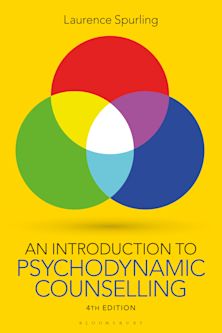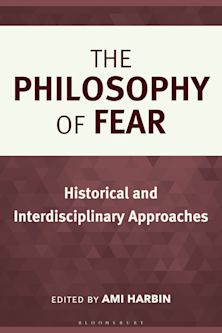- Home
- ACADEMIC
- Psychology
- Psychotherapy & Counselling
- Losing Your Head
Losing Your Head
Abjection, Aesthetic Conflict, and Psychoanalytic Criticism
Losing Your Head
Abjection, Aesthetic Conflict, and Psychoanalytic Criticism
This product is usually dispatched within 1 week
- Delivery and returns info
-
Free CA delivery on orders $40 or over
You must sign in to add this item to your wishlist. Please sign in or create an account
Description
Losing Your Head: Abjection, Aesthetic Conflict, and Psychoanalytic Criticism looks at the subject of beheading in art as a trope of the destruction of the mind. This book discusses both psychoanalytic theory and art criticism. It addresses critics, readers, and spectators interested in the keys of interpretation that psychoanalysis can offer, and analysts who are curious to know if artists can help them refine the tools they use every day. It asks whether artists have something to say about the concepts of reverie and negative reverie or about change as aesthetic transformation, and about aesthetic experience as a paradigm of what is most true and most profound in analysis. Why write about beheading? Many art galleries feature paintings of heroines performing this cruel act: Delilah, Salome, Judith, Yael, and others. At the antithesis to this, there is another theme to be found in painting that consistently garners attention: namely, the so-called “Sacred Conversation,” in which the Madonna holds a small child in her lap and their gazes cross. The first scene depicts how a mind is destroyed, the second how it is born. Losing Your Head analyzes well-known artwork from classical literature, cinema, and contemporary art to enhance psychoanalytic understanding.
Table of Contents
Giuseppe Civitarese, Sara Boffito and Francesco Capello
Chapter 2Aesthetic Conflict and Abjection in Boccaccio’s (L)Isabetta
Chapter 3Changing Styles, Affective Continuities and Psychic Containers: Corrado Govoni’s Early Poetry
Francesco Capello and Giuseppe Civitarese
Chapter 4Do Cyborgs Dream? Post-human Landscapes in Shinya Tsukamoto’s Nightmare Detective
Chapter 5The Dream Screen and the Birth of the Psyche in Ingmar Bergman’s Persona
Chapter 6What’s Going to Happen to Us Without Barbarians? Guilt and Paranoia in Michael Haneke’s Hidden
Chapter 7Joseph Losey’s The Servant, the Shattered Life
Chapter 8The Last Riot and the Déjà Vu Decapitations of the AES+F Group
References
About the Author
Product details
| Published | Feb 10 2015 |
|---|---|
| Format | Hardback |
| Edition | 1st |
| Extent | 134 |
| ISBN | 9781442239487 |
| Imprint | Rowman & Littlefield Publishers |
| Dimensions | 239 x 164 mm |
| Publisher | Bloomsbury Publishing |
About the contributors
Reviews
-
Giuseppe Civitarese has given us another thought provoking and wonderful new book to open our analytic minds to new ways of thinking about what we analysts do. This volume begins with a discussion of the meaning of ‘beheading,’ a topic that could not be more current as the destruction of the mind, and Civitarese beautifully examines how psychoanalytic theory and art criticism are related endeavors that each strengthen and build the mind. This erudite and aesthetically rich book continues Civitarese’s exploration of psychoanalysis and aesthetics that he began in his previous publication, The Violence of Emotions: Bion and Post-Bionian Psychoanalysis. This present volume further establishes Civitarese as a leading creative thinker in contemporary psychoanalysis.
Lawrence J. Brown, author of Intersubjective Processes and the Unconscious: Freudian, Kleinian and Bionian Perspectives
-
Focusing here on the unexpected theme of ‘decapitation’ (the real as well as the metaphorical losses of heads and minds), Giuseppe Civitarese’s critical reflections upon such a variety of artistic creations as a Haneke’s movie, a Boccaccio’s short story, or a video installation from the Venice Biennale leave us intellectually stimulated and enriched. Civitarese’s wide-ranging psychoanalytic scholarship on aesthetics, combined with his elegant writing style, will only surprise those readers not yet familiar with the depth and breadth of his contributions to psychoanalysis.
Andrea Sabbadini, British Psychoanalytical Society
-
Civitarese's extensive clinical experience and knowledge of Freud, Klein, Meltzer, Kristeva, and especially Bion, is here deployed in analyses of the art object, film, installation, and poetry to illuminate the nature of aesthetic experience and its fundamental place in the space and relationships of the analytic encounter.
Lesley Caldwell, PhD, University College London


































